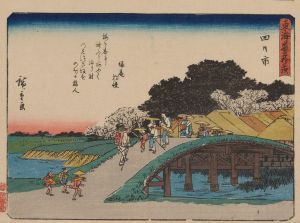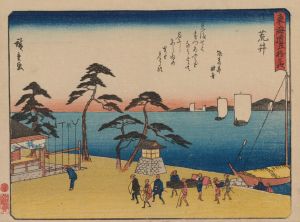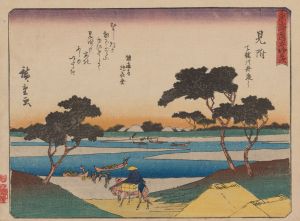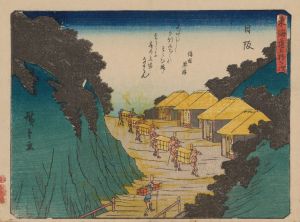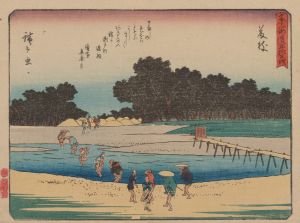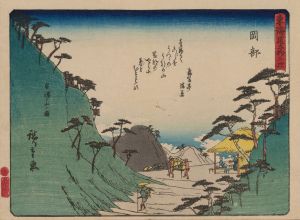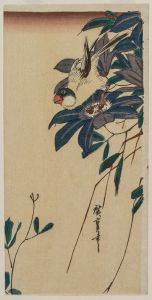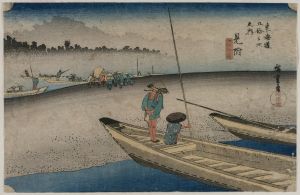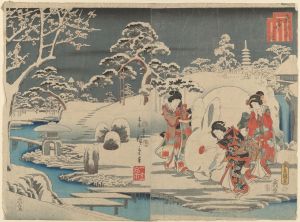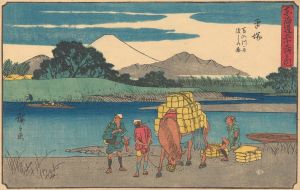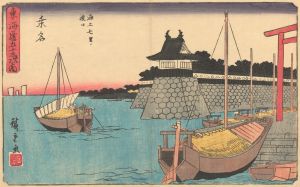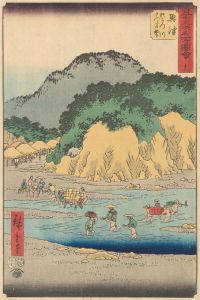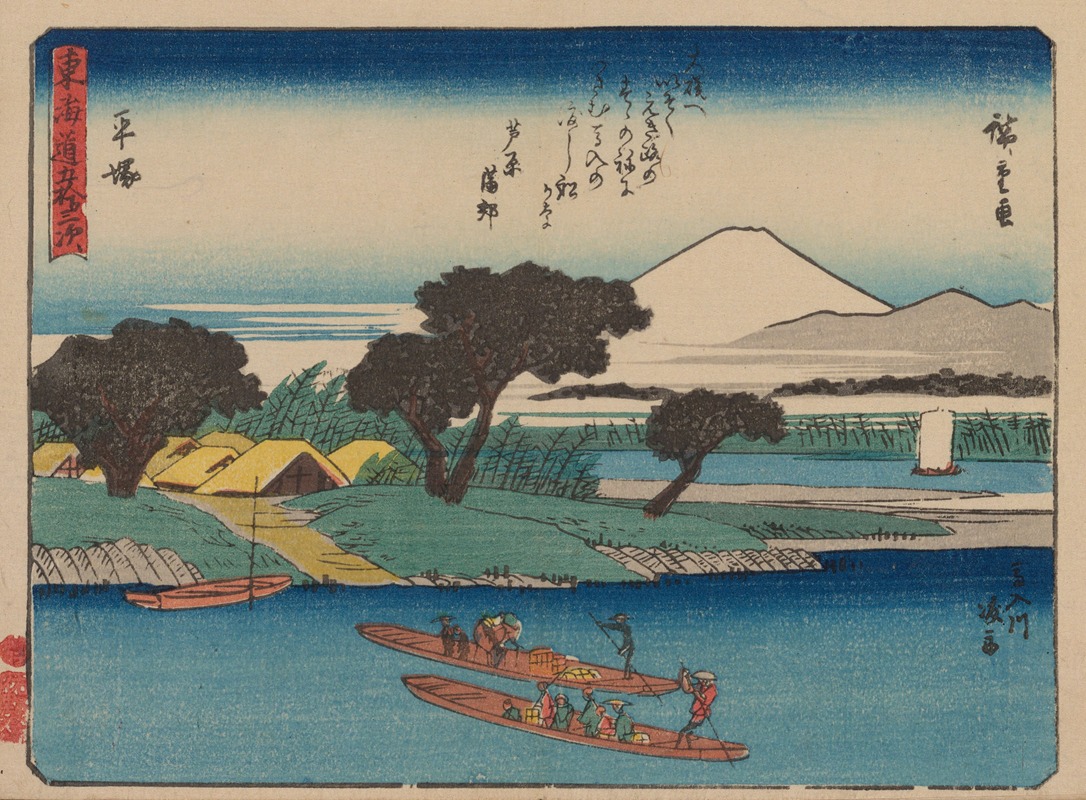
Tokaido gojusantsugi, Pl.08
A hand-painted replica of Andō Hiroshige’s masterpiece Tokaido gojusantsugi, Pl.08, meticulously crafted by professional artists to capture the true essence of the original. Each piece is created with museum-quality canvas and rare mineral pigments, carefully painted by experienced artists with delicate brushstrokes and rich, layered colors to perfectly recreate the texture of the original artwork. Unlike machine-printed reproductions, this hand-painted version brings the painting to life, infused with the artist’s emotions and skill in every stroke. Whether for personal collection or home decoration, it instantly elevates the artistic atmosphere of any space.
Andō Hiroshige, a renowned Japanese ukiyo-e artist of the Edo period, is celebrated for his landscape prints and depictions of the Tokaido Road, a vital route connecting Edo (modern-day Tokyo) to Kyoto. Among his most famous works is the series "The Fifty-three Stations of the Tokaido" (Tokaido gojusantsugi), which captures the scenic beauty and cultural significance of the various post stations along this historic road. Plate 08 of this series is one of the many prints that exemplify Hiroshige's mastery in portraying the landscapes and daily life of Japan during the 19th century.
Hiroshige's Tokaido series was inspired by his own journey along the Tokaido Road in 1832, when he was part of an official delegation. This experience allowed him to observe firsthand the diverse landscapes and vibrant activities at each station. The series, published between 1833 and 1834, consists of 55 prints, including the starting point at Nihonbashi in Edo and the terminus at the Sanjo Bridge in Kyoto, along with the 53 stations in between.
Plate 08 of the series, like the other prints, is a woodblock print, a popular medium in Japan during this period. Hiroshige's work is characterized by its use of perspective, vibrant colors, and attention to detail, which together create a sense of depth and movement. His prints often include human figures, animals, and natural elements, all harmoniously integrated into the composition.
The Tokaido series was not only an artistic achievement but also a commercial success, appealing to a wide audience eager to experience the journey through Hiroshige's eyes. The prints served as a form of travelogue, offering viewers a glimpse into the landscapes and life along the Tokaido Road. They also reflected the growing interest in travel and exploration among the Japanese public during the Edo period.
Hiroshige's work had a significant influence on Western art, particularly during the Japonisme movement in the late 19th century. European artists, including Vincent van Gogh and Claude Monet, were inspired by Hiroshige's compositions, use of color, and innovative perspectives. His prints contributed to a broader appreciation of Japanese art and culture in the West.
Today, Hiroshige's Tokaido series is celebrated for its artistic merit and historical significance. The prints are housed in various museums and collections worldwide, where they continue to be studied and admired for their beauty and insight into Edo-period Japan. Hiroshige's ability to capture the essence of the Tokaido Road and its surroundings has cemented his legacy as one of Japan's greatest ukiyo-e artists.






